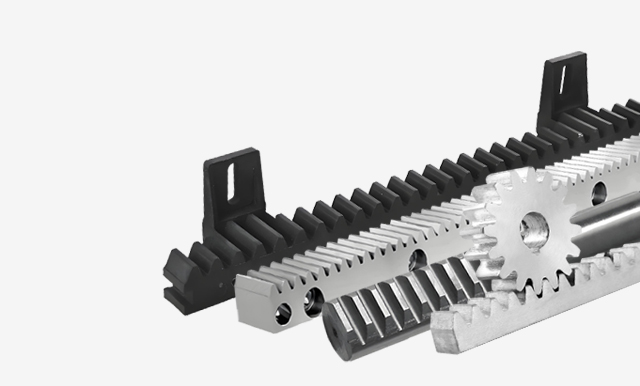No. 200 Gaoxin RD, Shanghua St, Lanxi, Zhejiang, P. R China
The Stainless Steel Rack Pinion Gear for Sliding Motors is a high-prec...
See Details
Helical gears are commonly used in mechanical systems that require smooth and quiet power transmission. Their angled teeth allow for gradual engagement, which can reduce vibration and noise compared to other gear types. For engineers considering high-speed applications, the question arises: can Helical Gear Factory products reliably handle these conditions?
Advantages of Helical Gears for Speed
One of the main advantages of helical gears is their ability to transmit motion smoothly. The teeth of helical gears are cut at an angle, allowing multiple teeth to be in contact at the same time. This distributes the load across several points, reducing stress on individual teeth and minimizing vibration.
Helical Gear Factory products are often designed to exploit this feature, making them suitable for applications where quieter and smoother operation is desired. Compared to spur gears, helical gears generate less shock during engagement, which is particularly important in high-speed environments.
Load Capacity and Durability
High-speed applications place significant stress on gears, and durability is a critical consideration. Helical gears generally have higher load capacity than equivalent spur gears due to the increased contact area. However, the axial thrust generated by the angled teeth must be managed with proper bearings and housing design.
Manufacturers from a Helical Gear Factory typically provide detailed specifications for load ratings and operating limits. Selecting gears with appropriate material, surface treatment, and hardness ensures that they can withstand high-speed operation without excessive wear or failure.
Material Selection and Manufacturing Quality
The performance of helical gears in high-speed systems depends heavily on material quality and precision manufacturing. Common materials include alloy steel, stainless steel, or case-hardened steel, chosen for their strength and resistance to fatigue. Surface treatments such as carburizing or nitriding can further enhance durability.
A reputable Helical Gear Factory maintains strict quality control to ensure accurate tooth profiles, tight tolerances, and smooth surface finishes. Precision in manufacturing reduces noise, vibration, and heat generation, which are critical factors at high rotational speeds.
Heat Generation and Lubrication
High-speed operation generates heat due to friction between meshing teeth. Helical gears produce more sliding friction than spur gears because of the angled engagement, which can increase heat if not managed properly.
Effective lubrication is essential. Helical Gear Factory products often recommend specific oils or greases and may provide guidance on lubrication schedules. Proper lubrication reduces wear, prevents overheating, and ensures consistent performance over time.
Applications in Industry
Helical gears are commonly used in automotive transmissions, industrial machinery, and high-speed conveyor systems. Their smooth operation, load-bearing capacity, and ability to reduce noise make them suitable for many high-speed applications. When paired with well-designed bearings and housings, they can operate reliably at significant rotational speeds.
However, the axial thrust they generate requires careful system design, and high-speed applications may necessitate additional support components to maintain alignment and reduce stress on the gears.
Helical gears can be suitable for high-speed applications when chosen and applied correctly. Factors such as load capacity, material quality, manufacturing precision, lubrication, and system design all play critical roles. A reliable Helical Gear Factory can provide gears with specifications tailored to high-speed operation, ensuring smooth performance, durability, and reduced noise. By considering these aspects, engineers can confidently integrate helical gears into systems requiring rapid and consistent motion.